230. If the False Sun (Itzam-Yeh,
Ursa Major) had 'alighted' at the top of the
'Tree', in spite of the fact that his
constellation due to the precession no
longer occupied the North Pole,

... This pot depicts one of the Hero Twins (One-Ahaw
in the Classic texts and
One-Hunaphu
in the K'iche´ Popol Vuh) and a great bird
who is trying to land in a huge
ceiba
tree heavy with fruit. This mythical bird is
Itzam-Yeh, Classic prototype of
Wuqub-Kaqix,
'Seven-Macaw', of Popol Vuh fame. In that
story, in the time before the sky was lifted
up to make room for the light, the
vainglorious
Seven-Macaw
imagined himself to be the sun. Offended by
his pride, the Hero Twins humbled him by
breaking his beautiful shining tooth with a
pellet from their blowgun. This pot shows
One-Ahaw aiming at the bird as he swoops
down to land in his tree. As Itzam-Yeh
lands on his perch, the text tells us he
is 'entering or becoming the sky'.
This particular 'sky-entering' is not the
one mentioned in the Palenque text. It is
the final event that occurred in the
previous creation before the universe was
remade. Before the sky could be raised and
the real sun revealed in all its splendor,
the Hero Twins had to put the false sun,
Itzam-Yeh, in his place. If the date on
this pot corresponds to that pre-Columbian
event, as we believe it does, then
Itzam-Yeh was defeated on 12.18.4.5.0 1
Ahaw 3 K'ank'in (May 28, 3149
BC). After the new universe was finally
brought into existence, First Father also
entered the sky by landing in the tree, just
as Itzam-Yeh did ...
another
and more radical option (than shooting him down) could have
been to remove the whole Tree (or at least its top
boughs) and from then onwards to instead rely on
only a single 'canoe'
-
a Sun Canoe:
... At Opoa, at one of the last great
gatherings of the Hau-pahu-nui, for
idolatrous worship, before the arrival of
European ships, a strange thing happened
during our [the two priests of Porapora,
Auna-iti and Vai-au] solemn
festivity. Just at the close of the
pa'i-atua ceremony, there came a
whirlwind which plucked off the head of a
tall spreading tamanu tree, named
Paruru-mata'i-i-'a'ana
(Screen-from-wind-of-aggravating-crime),
leaving the bare trunk standing.
This was
very remarkable, as tamanu wood is
very hard and close-grained. Awe struck the
hearts of all present. The representatives
of each people looked at those of the other
in silence for some time, until at last a
priest of Opoa named Vaità
(Smitten-water) exclaimed, - E homa, eaha
ta 'outou e feruri nei? (Friends, upon
what are you meditating?) - Te feruri nei
i te tapa'o o teie ra'au i motu nei; a'ita
te ra'au nei i motu mai te po au'iu'i mai.
(We are wondering what the breaking of this
tree may be ominous of; such a thing has not
happened to our trees from the remotest
age), the people replied. Then Vaità,
feeling inspired, proceeded to tell the
meaning of this strange event… I see before
me the meaning of this strange event! There
are coming the glorious children of the
Trunk (God), who will see these trees here,
in Taputapuatea. In person, they
differ from us, yet they are the same as we,
from the Trunk, and they will possess this
land. There will be an end to our present
customs, and the sacred birds of sea and
land will come to mourn over what this tree
that is severed teaches. This unexpected
speech amazed the people and sages, and we
enquired where such people were to be found.
Te haere mai nei na ni'a i te ho'e pahi ama
'ore. (They are coming on a ship without
an outrigger), was Vaitàs reply. Then
in order to illustrate the subject, Vaità,
seeing a large umete (wooden trough)
at hand, asked the king to send some men
with it and place it balanced with stones in
the sea, which was quickly done, and there
the umete sat upon the waves with no
signs of upsetting amid the applauding
shouts of the people ... (Teuira Henry,
Ancient Tahiti.)
... He cleared the trunks of their branches
and bark, hewed them into shape, and with
strong fau ropes he and his men drew
them down the valley over cliffs and
ravines, seeming to feel it merely light
work. Thus King Puna was robbed of
his fine aha-tea tree, his
mara-uri tree, a toi (Alphitonia)
tree, and a hauou (pua,
Fagraea) tree; and Hiro spared
not the trees sacred to the gods around the
marae.
He cut down a great tamanu (Callophylum),
stripped the trunk of its branches and bark,
split it up for planks for the bows of his
canoe, and trimmed the branches for
outriggers and crossbeams ...
The double-canoe - or canoe with
outrigger (ama) and crossbeams
formed by Hiro from tamanu branches - gave stability, like
the pair of faces of the Moon:
... Twice 4 = 8 and 18 = 2 + 16, i.e. maybe
we should count 2 glyphs per unit of time -
which would be in harmony with how the Moon
in the night had 2 faces, growing and
declining, and how there were 2 weeks in a
fortnight, a pair of fortnights in a month,
and 2 * 29½ = 59 nights in a synodic lunar
double-month. And a pair of half-years in a
year
...
However, a canoe without an outrigger (ama kore)
could anyhow keep its balance with help from stones.
Tau-ono (the Pleiades) had 6 (ono)
'stones (tau, stars)

and this asterism could be used for
determining (checking) where the Sun year
should be
beginning.

The basic structure of the C text
evidently could have been designed to incorporate 364 days followed by 377 (= 13
* 29). By counting also the empty glyph
space at the beginning of side a ('day
zero') the sum becomes 741 = 3 * 13 * 19 = 364 + 377.
Thus side a was 'kept in balance' by side
b:
|
a1 |
26 |
26 |
b1 |
24 |
24 |
416 |
|
a2 |
25 |
51 |
b2 |
5 |
29 |
421 |
|
a3 |
25 |
76 |
20 |
49 |
441 |
|
a4 |
29 |
105 |
b3 |
22 |
71 |
463 |
|
a5 |
35 |
140 |
b4 |
23 |
94 |
486 |
|
a6 |
28 |
168 |
b5 |
21 |
115 |
507 |
|
a7 |
31 |
199 |
b6 |
29 |
144 |
536 |
|
a8 |
29 |
228 |
b7 |
27 |
171 |
563 |
|
a9 |
27 |
255 |
b8 |
29 |
200 |
592 |
|
a10 |
29 |
284 |
b9 |
30 |
230 |
622 |
|
a11 |
32 |
316 |
b10 |
22 |
252 |
644 |
|
a12 |
27 |
343 |
b11 |
22 |
274 |
666 |
|
a13 |
20 |
363 |
b12 |
25 |
299 |
691 |
| |
b13 |
30 |
329 |
721 |
|
a14 |
29 |
392 |
b14 |
19 |
348 |
740 |
|
sum |
392 |
348 = 12 * 29 |
At position 364 + 58 (= 2 * 29½) =
422 was Alcoyone:
... another Alcyone, daughter of Pleione,
'Queen of Sailing', by the oak-hero Atlas,
was the mystical leader of the seven
Pleiads. The heliacal rising of the Pleiads
in May marked the beginning of the
navigational year; their setting marked its
end when (as Pliny notices in a passage
about the halcyon) a remarkably cold North
wind blows ...
 |
 |
 |
 |
 |
|
*Ca14-1 |
*Ca14-2 |
(366) |
*Ca14-4 |
*Ca14-5 |
|
Kua tupu
te ata i te henua |
 |
 |
 |
 |
 |
28 |
 |
|
Ca13-16 |
Ca13-17 (360) |
Ca13-18 |
Ca13-19 |
Ca13-20 (354 + 9) |
*Ca14-29 (392) |
|
oho te vae |
tagata puoko
erua |
tagata puo
pouo |
te vero hia |
- |
te rima |
|
3-14 (→ π) |
March 15 |
16 |
17 |
18 (77) |
April 16 (106) |
|
'Febr 15 |
16 |
17 |
18 |
19 (50) |
'March 20 (79) |
|
"Febr 1 |
2 |
3 |
4 |
5 (36) |
"March 6 (65) |
|
350 |
351 |
352 |
353 |
12 * 29½ |
383 |
 |
 |
13 |
 |
 |
13 |
 |
 |
|
353 |
354 |
Wolf |
Whip |
Polaris |
Sheratan |
|
te vero hia |
Ca13-20 |
April 1 (91) |
te vero |
*Ca14-29 (392) |
April 17 (107) |
|
15 |
16 (= 80 - 64) |
'March 21 (80) |
|
32 (= 2 * 2 * 2 * 2 * 2) |
 |
 |
 |
 |
|
Cb2-4 (420 = 285 + 135) |
Cb2-5 (392 + 29) |
Cb2-6 (30) |
Cb2-7 |
|
te ua |
koia ra |
kua tuku ki to
mata - ki tona tukuga |
e kiore -
henua
-
pa rei |
|
INVISIBLY CLOSE TO THE SUN
(helical dates): |
|
π Cor.
Borealis,
UNUK ELHAIA
(Necks
of the Serpents) = λ Serpentis
(238.1),
CHOW = β Serpentis
(238.6) |
κ Serpentis (239.3), δ Cor.
Borealis,
TIĀNRŪ = μ Serpentis
(239.5), χ Lupi, (239.6), ω
Serpentis (239.7),
BA (= Pa) = ε Serpentis,
χ Herculis (239.8). κ Cor.
Borealis, ρ Serpentis (239.9) |
λ Librae (240.0), β Tr. Austr.
(240.3), κ Tr. Austr. (240.4), ρ
Scorpii (240.8) |
Iklīl al Jabhah-15 (Crown of the
Forehead) /
Anuradha-17 (Following
Rādhā)
/
Room-4 (Hare)
ξ Lupi, λ Cor. Bor.(241.1),
ZHENG = γ Serpentis,
θ Librae (241.2),
VRISCHIKA = π Scorpii
(241.3), ε Cor. Borealis
(241.5), DSCHUBBA
(Front of Forehead)
m = δ Scorpii
(241.7), η Lupi (241.9) |
|
Nov 14 |
15 |
16 (320) |
17 |
|
ºNov 10 (314 = 318 - 4) |
11 |
12 |
13 |
|
'Oct 18 (291 = 318 - 27) |
19 |
20 |
21 |
|
"Oct 4 (277 = 318 - 41) |
5 |
6 |
7 |
|
SEPT 11
(254 = 318 - 64) |
12 |
13 |
14 |
|
234 = 318 - 84 |
235 |
236 (= 8 * 29½) |
237 |
|
Pa.
1. Mgv.:
pa, an inclosure, a
fenced place. Ta.: pa,
inclosure,
fortification. Mq.:
pa, inclosure. Sa.:
pa, a wall. Ma.:
pa, a fort. 2.
Mgv.: pa, to
touch. Sa.: pa'i,
id. Ma.: pa, id.
3. Mgv.: pa, to
prattle. Ta.:
hakapapa, to
recount. 4. Mq.: pa,
a hook in bonito
fishing. Sa.: pa,
a pearlshell fishhook.
Ma.: pa, a
fishhook.
Pau.:
hakapa, to feel, to
touch. Mgv.: akapa,
to feel, to touch, to
handle cautiously.
ε, of 3.7 magnitude, was
Pa, the name of a
certain territory in
China. (Allen) |
|
Pae.
1. To
end, to come to an end;
ku-pae-á taaku kai,
I have no more food;
pae-atu, to leave
en masse;
ku-pae-atu-á tagata ki
Hangaroa tai.
everybody has left for
Hangaroa Bay. 2.
To start, to break out
(of wars, fights:
taûa); ku-pae-á
te taûa, the fight,
the war, has started. 3.
Dressed, edged stones
anciently used to
enclose a permanent
umu; paepae
wall of undressed stones
built as protection
against the wind; also
any other protection.
Pa'e: Of a boat, to
deviate, to drift, to
stray under the effects
of currents or winds;
ku-pa'e-á te vaka i te
tokerau, the wind
has made the boat
deviate from its course.
Vanaga.
Paega: 1. Dressed
stones forming the
foundations of the
ancient houses or of the
walls of the monumental
ahus; hare
paega, house with
stone foundations;
paega-ahu, ahu wall.
2. Household, people who
live in a hare paega.
3. To lay stones on the
bottom and against the
sides of a hole:
he-paega i te rua.
Vanaga.
1.
Enough. 2. Division of a
subject (paiga).
Pau.: paega, a
party, a side. Ta.:
pae, division, part.
3. Threshold, sill,
joist. P Ta.: pae,
sill, joist. 4. To
exhaust, to finish,
past; e ko pae,
impregnable; hakapae,
to exhaust, to finish,
to end, to execute, to
accomplish, to conclude,
to consummate, to
consume, to achieve, to
acquit. Paea: 1.
Enough, past. 2. To
decay, to waste away;
paea tooa, to
deprive. Paega,
foundation. Paepae,
pavement, plank, canoe;
hakapaepae, to
lay planks, to floor. P
Pau.: paepae, a
raft. Mgv.: paepae,
a pavement, to lay up
stones with regularity
into a wall. Mq.:
paepae, elevated
pavement on which the
house is built. Ta.:
paepae, pavement,
raft. Paero, all,
totalit, to sweep off
all. Churchill. |
|
Pahi. T.
Double-canoe. Henry.
Pahu.
Drum.
Pahu-rutu-roa =
Long-beating-drum.
Barthel. M. Pahū.
Tree gong.
Starzecka.
Pahu uma,
coffin; in modern usage,
any sort of jar.
Pahupahu = To dig a
hole. Vanaga.
A trough,
barrel, cask, cradle,
drum, chest, box;
pahu nui, a
kettle;
pahu oka, a
drawer;
pahu papaku,
coffin;
pahu rikiriki,
sheath;
pahu viriviri,
hogshead.
Pahupahu,
box. Churchill.
A
trough, barrel, cask,
cradle, drum, chest,
box;
pahu nui,
a kettle;
pahu oka,
a drawer;
pahu papaku,
coffin;
pahu rikiriki,
sheath;
pahu viriviri,
hogshead;
pahupahu,
box. P Mgv., Ta.:
pahu, a
drum. Mq.:
pahu, a
drum, a large
cylindrical container.
(To.:
bahu, a
hollow tree set in water
as a filter.) Sa.:
pusa, a
box. To.:
buha, id.
Fu.:
pusa, id.
Niue:
puha, id.
Pau.:
puha, id.
Pahuahi,
lantern, beacon.
Paukumi,
closet, cupboard.
Pahupopo,
a mould;
pahupopokai,
cupboard for food.
Pahure: 1.
To sweep everything
away. 2. To wound, to
lacerate, scar, bruise,
lesion, sore;
pahurehure,
to wound, to scratch;
hakapahure,
to wound. T Pau.:
pahure, to
be skinned;
pahore, to
peel off, to scale.
Mgv.:
pahore, to
cut off, to chop, to
slice. Ta.:
pahore, to
flay, to skin. Churchill
2. |
|
|
CLOSE TO THE FULL MOON (and
nakshatra dates): |
|
Al Thurayya-27 (Many Little
Ones) /
Krittikā-3 (Nurses of
Kārttikeya)
/
TAU-ONO
(Six Stones)
ATIKS = ο Persei,
RANA
(Frog) = δ Eridani
(55.1),
CELAENO (16 Tauri), ELECTRA
(17), TAYGETA (19),
ν
Persei (55.3),
MAIA (20), ASTEROPE (21), MEROPE
(23)
(55.6) |
Hairy Head-18
(Cockerel) /
Temennu-3
(Foundation Stone)
ALCYONE
(56.1),
PLEIONE
(28 Tauri),
ATLAS
(27)
(56.3) |
MENKHIB (Next to the Pleiades) =
ζ Persei
(57.6)
PORRIMA (γ Virginis)
|
ZAURAK
(The Boat) = γ Eridani
(58.9) |
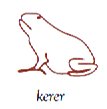 |
|
15 (135 + 365 = 500) |
May 16 (136) |
17 |
18 (*58) |
|
ºMay 11 |
12 (132) |
13 |
14 (*54) |
|
4-18 (473
= 108 + 365) |
'April 19 |
4-20 |
21 (111) |
|
"April 4 |
5 (501 - 41 = 460) |
6 (*16) |
7 |
|
MARCH 12 |
13 |
3-14 (73) |
15 |
|
417 (= 51 + 366) |
52 (= 136 - 84) |
53 (= 73 - 20) |
54 (= *58 - 4) |
|
... The Mahabharata
insists on six as the
number of the Pleiades as well
as of the mothers of Skanda
and gives a very broad and wild
description of the birth and the
installation of Kartikeya
'by the assembled gods ... as
their generalissimo', which is
shattering, somehow, driving
home how little one understands
as yet. The least which can be
said, assuredly: Mars was
'installed' during a more or
less close conjunction of all
planets; in Mbh. 9.45 (p. 133)
it is stressed that the powerful
gods assembled 'all poured water
upon Skanda, even as the
gods had poured water on the
head of Varuna, the lord
of waters, for investing him
with dominion'. And this
'investiture' took place at the
beginning of the Krita Yuga,
the Golden Age
... |
However, the balance in the C
text may have necessitated marking a
week at the beginning and at its end:
|
no glyph (day zero) |
 |
 |
 |
 |
 |
 |
|
Ca1-1 |
Ca1-2 |
Ca1-3 |
Ca1-4 |
Ca1-5 |
Ca1-6 |
|
koia |
ki te hoea |
ki te henua |
te rima te hau tea |
haga i te mea ke |
ki te henua - tagata honui |
|
Sept 20 (*183) |
264 |
EQUINOX |
23 (366 - 100) |
24 |
25 (*188) |
(59 + 183 + 27) |
|
St John's day |
*96 = *184 - *88 |
177 = 6 * 29½ |
*98 |
*99 |
*188 - *88 |
*101 (30 June) |
|
INVISIBLY CLOSE TO THE SUN
(helical dates): |
|
ALCHITA (The Southern Tent)
= α Corvi, MA WEI (Tail of
the Horse) = δ Centauri
(183.7), ρ Centauri (183.9) |
PÁLIDA
(Pale) = δ Crucis
(184.6),
MEGREZ
(Root of the Tail) = δ Ursae Majoris
(184.9) |
Hasta-13 (Hand) /
Chariot-28 (Worm)
GIENAH (Wing) = γ Corvi
(185.1), ε Muscae (185.2), ζ
Crucis (185.4),
ZANIAH
(Corner) = η Virginis
(185.9) |
CHANG SHA (Long Sand-bank) =
ζ Corvi
(186.3) |
INTROMETIDA (Inserted) = ε Crucis
(187.4),
ACRUX = α Crucis
(187.5) |
γ Com. Berenicis (188.0), σ
Centauri (188.1),
ALGORAB = δ Corvi
(188.5),
GACRUX = γ Crucis
(188.7) |
γ Muscae (189.0),
AVIS SATYRA (Bird of the
Satyrs) = η Corvi
(189.3),
ASTERION (Starry) = β Canum Ven.
(189.5),
KRAZ = β Corvi,
κ Draconis (189.7) |
 |
|
CLOSE TO THE FULL MOON (and
nakshatra dates): |
|
Al
Fargh al Thāni-25 (Rear
Spout)
0h (*366)
CAPH
(Hand) = β Cassiopeiae,
SIRRAH
(Navel of the Horse) = α
Andromedae
(0.5), ε Phoenicis, γ³ Oct.
(0.8) |
Uttara Bhādrapadā-27
(2nd of the Blessed Feet) /
Wall-14 (Porcupine)
ο Oct. (1.3),
ALGENIB PEGASI
= γ Pegasi
(1.8) |
χ Pegasi (2.1), θ Andromedae
(2.7) |
σ Andromedae (3.0), ι Ceti
(3.3), ζ Tucanae (3.5), ρ
Andromedae, π Tucanae (3.7) |
no star listed (4) |
ANKAA = α Phoenicis,
κ Phoenicis (5.0)
ALPHARD (α Hydrae)
|
λ Phoenicis (6.3), β Tucanae
(6.4) |
|
March 21 (80) |
22 (*1) |
23 |
24 |
25 |
26 |
27 (*372) |
|
... Ecclesiastically, the
equinox is reckoned to be on
21 March (even though the
equinox occurs,
astronomically speaking, on
20 March in most years)
...
... When the Pope rearranged
the day for spring equinox
from number 84 ('March 25)
to number 80 (ºMarch 21) the
earlier Julian structure was
buried, was covered up (puo).
At the same time the Pope
deliberately avoided to
correct the flow of Julian
calendar days for what he
may have regarded as 4
unneccesary leap days prior
to the Council of Nicaea.
Thus his balance sheet for
days was in order. The day
numbers counted from the
equinox were increased with
4 and this was equal to
allowing the 4
'unneccessary' leap days to
remain in place. But he had
moved spring equinox to a
position which was 4 days
too early compared to the
ancient model ... |
|
'Febr 22 (2-22) |
Terminalia (54) |
24 (82 - 27)
|
25 |
26 |
27 |
28 |
|
... The leap
day was introduced as part
of the Julian reform. The
day following the Terminalia
(February 23) was doubled,
forming the 'bis sextum
- literally 'double sixth',
since February 24 was 'the
sixth day before the Kalends
of March' using Roman
inclusive counting (March 1
was the 'first day').
Although exceptions exist,
the first day of the bis
sextum (February 24) was
usually regarded as the
intercalated or 'bissextile'
day since the third century.
February 29 came to be
regarded as the leap day
when the Roman system of
numbering days was replaced
by sequential numbering in
the late Middle Ages ... |
|
Christmas Eve |
*96 + *183 |
360 = 6 * 60 |
*98 + *183 |
362 |
180 + 183 |
*284 (30 Dec) |
 |
 |
 |
 |
 |
 |
|
Cb1-1 |
Cb1-2 |
Cb1-3 |
Cb1-4 (396) |
Cb1-5 |
Cb1-6 |
|
E tupu |
ki roto |
o te hau tea |
ki te henua -
te maro |
rutua |
te pahu |
 |
341 |
 |
|
te rima |
kua to i te heke |
|
392 |
734 |
|
POLARIS at Full Moon |
Sun at the LONG SAND BANK |
 |
 |
 |
|
Cb14-14 (735) |
Cb14-15 (723 + 13)
|
Cb14-16 (345) |
|
tagata tui i
tona ika |
manu puoko erua |
te manu - e noi
koe te manu |
|
INVISIBLY CLOSE TO THE SUN: |
|
INTROMETIDA (Inserted) = ε
Crucis
(187.4),
ACRUX
= α Crucis
(187.5) |
γ Com. Berenicis (188.0), σ
Centauri (188.1),
ALGORAB
= δ Corvi
(188.5),
GACRUX = γ Crucis
(188.7)
|
γ Muscae (189.0),
AVIS SATYRA (Bird of the Satyrs)
= η Corvi
(189.3),
ASTERION (Starry) = β Canum Ven.
(189.5),
KRAZ = β Corvi,
κ Draconis (189.7) |
|
Sept 24 (267) |
25
(*188 = *5 + *183) |
26 |
|
22 / 7 (π) |
JULY 23 (*124 = *188 - *64) |
24 (205 = 22 + 183) |
|
183 |
184 |
185 |
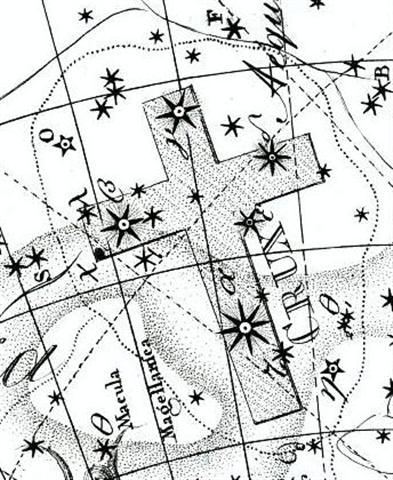 |
|
CLOSE TO THE FULL MOON: |
|
no star listed (4) |
ANKAA
= α Phoenicis,
κ Phoenicis (5.0)
ALPHARD (α Hydrae)
|
λ
Phoenicis (6.3), β Tucanae (6.4) |
|
Julian
equinox |
March 26 (85) |
27 |
|
JAN 20 |
21 (= 85 - 64) |
22 |
|
0 (= 84 - 84) |
1 |
2 |
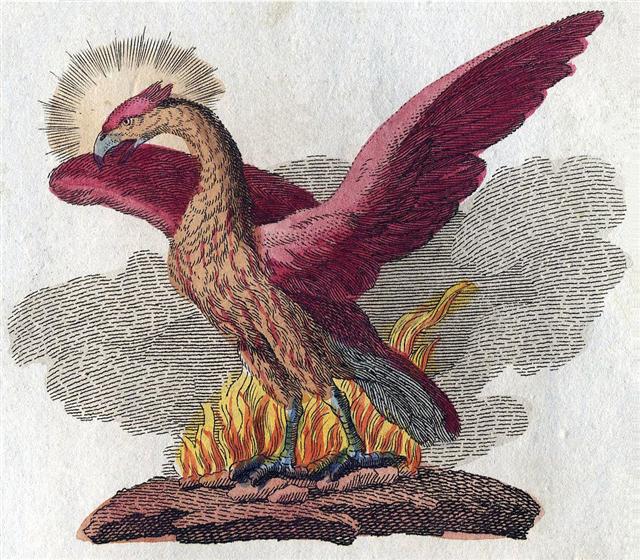 |
 |
 |
 |
|
Cb14-17 (346) |
Cb14-18 |
Cb14-19 (740) |
|
kokoti hia
te henua |
tagata hakaitiiti |
i te henua |
|
INVISIBLY CLOSE TO THE SUN: |
|
α Muscae (190.2),
τ Centauri (190.5), χ
Virginis (190.7) ALDERAMIN (α
Cephei)
|
Al Áwwā'-11 /
Shur-mahrū-shirū-18
(Front or West Shur)
SOMBRERO GALAXY = M104
Virginis
(191.1), ρ Virginis (191.4),
PORRIMA = γ
Virginis,
γ Centauri (191.5) |
ι Crucis (192.2), β Muscae
(192.5),
MIMOSA
= β Crucis
(192.9) |
|
Sept 27 (270 = 273 - 3) |
28 |
29 (*192 = 2 * 136 - 80) |
|
JULY 25 |
26 (*127 = *191 - *64) |
27 (208 = 25 + 183) |
|
186 |
187 |
188 = 2 * 136 - 84 |
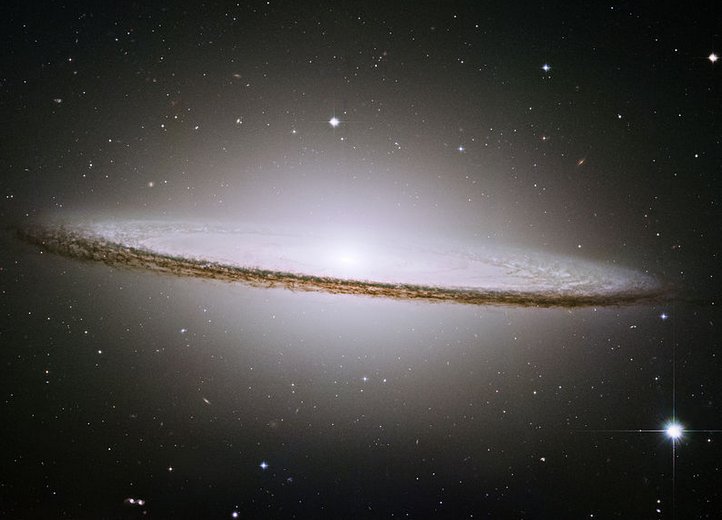 |
|
CLOSE TO THE FULL MOON: |
|
ANDROMEDA GALAXY (M31),
π Andromedae (7.7) |
ε Andromedae (8.2),
DELTA
= δ Andromedae
(8.4),
SCHEDIR (Breast) = α
Cassiopeiae
(8.6), ζ Andromedae, μ
Phoenicis (8.9) |
ξ Phoenicis (9.0), ρ Tucanae
(9.1),
DENEB KAITOS (Tail of the
Sea Beast) = β Ceti,
η Phoenicis (9.4),
AL NITHĀM (String of Pearls)
= φ¹ Ceti
(9.6) |
|
March 28 (*7) |
29 (88) |
30 |
|
JAN 23 |
24 |
25 (390 = 365 + 25) |
|
3 |
4 |
5 |

|
|
|
Delta |
δ Andromedae |
8.4 |
March 29 (88) |
|
0 |
- |
Zero |
η Andromedae |
11.4 |
April 1 (91) |
|
1 |
Al Sharatain |
Pair of Signs |
β Arietis
(Sheratan),
γ (Mesarthim) |
27.4 |
April 17 (107) |
|
|
|
Musca Borealis |
35 (Head of
the Fly), 39
(Kaffaljidhma),Arietis
(Bharani) |
41.4 |
May 1 (121) |
|
2 |
Al Dabarān |
Follower |
α Tauri
(Aldebaran), θ¹,
θ²´,
γ (Hyadum I),
δ (Hyadum II), ε
(Ain) |
63.4 |
May 23 (143) |
|
3 |
Al Hak'ah |
White Spot |
λ Orionis
(Heka),
φ¹, φ² |
83.4 |
June 12 (163) |
|
4 |
Al Han'ah |
Brand |
γ Gemini
(Alhena), μ
(Tejat
Posterior), ν,
η (Tejat Prior),
ξ (Alzirr) |
93.4 |
June 22 (173) |
|
In Chinese Checkers there are 6 * (1
+ 2 + 3 + 4) = 60 'stones' distributed
symmetrically around the central
hexagonal field, which in turn has 61 holes. The total
number of holes is therefore 60 + 61
= 121 (= 11 * 11), and May 1 - when
in rongorongo times Bharani rose heliacally -
was day number 121:
 |
 |
 |
 |
|
Cb1-12 (354 + 50) |
Cb1-13 |
Cb1-14 (350 + 8 * 7) |
Cb1-15 (407) |
|
manu rere -
kua rere ga manu
- ki te ragi |
eaha te nuku erua |
koia kua huki |
e niu tu |
|
Ga.
Preposed
plural marker of rare
usage. 1. Sometimes used
with a few nouns
denoting human beings,
more often omitted.
Te ga vî'e, te ga poki,
the women and the
children. Ga rauhiva
twins. 2. Used with some
proper names. Ga
Vaka, Alpha and Beta
Centauri (lit. Canoes).
Vanaga.
Significantly this is
the only place among the
readings of Metoro where
he used the binome
rere ga. Beta
Centauri (Agena, the
Knee) rose together with
Thuban and this was 9 (=
*221 - *212) days
earlier than Toliman at
the Janus type of hau
tea in Cb1-3 when at
the other side of the
sky was the Knot
(Alrisha). |
|
INVISIBLY CLOSE TO THE
SUN (helical dates): |
|
ρ Lupi (221.0),
TOLIMAN
(Shoot of the Grapevine)
= α Centauri
(221.2), π Bootis
(221.8), ζ Bootis
(221.9) |
31 Bootis (222.0),
YANG MUN
(South Gate) = α Lupi
(222.1),
RIJL AL AWWA (Foot of
the Barker) = μ Virginis
(222.5), ο Bootis
(222.9) |
IZAR (Girdle) = ε Bootis
(223.0),
109 Virginis,
α
Apodis (No Feet)
(223.3), μ Librae
(223.8) |
Al Zubānā-14a
(Claws) /
Visakha-16 (Forked) /
Root-3 (Badger)
ZUBEN ELGENUBI
(Southern
Claw)
= α Librae
(224.2), ξ Bootis, ο
Lupi (224.5) |
KOCHAB
(Kakkab,
the Star) = β Ursae Min.
(225.0), ξ Librae
(225.7) |
|
Oct 28 (301) |
29 |
30 (366 - 63) |
31 (304 = 80 + *225) |
Nov 1 |
|
ºOct 24 |
25 |
26 |
27 (300) |
28 |
|
'Oct 1 |
2 |
3 |
4 (277) |
5 |
|
17 (260) |
(*222 - *41) |
"Sept 19 (*182) |
20 |
21 (264) |
|
AUG 25 |
26 (*222 - *64) |
27 (239 = 303 - 64) |
28 (60 + 180) |
29 (241 = 58 + 183) |
|
217 - 218 |
219 |
220 (= 240 - 20) |
221 (= 225 - 4) |
 |
|
CLOSE TO THE FULL MOON
(and nakshatra dates): |
 |
|
ν Arietis (38.5), δ, ε
Ceti (38.8) |
μ Arietis (39.4),
HEAD OF THE FLY
= 35 Arietis
(39.6),
KAFFALJIDHMA (Part of a
Hand) = γ Ceti,
θ Persei (39.8) |
π Ceti, ο Arietis
(40.0),
ANGETENAR (Bend in the
River) = τ¹ Eridani,
μ Ceti (40.2),
RIGHT WING
= 39 Arietis
(40.9) |
Bharani-2 (Yoni) /
Stomach-17 (Pheasant)
π Arietis (41.2),
MIRAM (Next to the
Pleiades) = η Persei
(41.3),
BHARANI
= 41 Arietis (41.4),
τ² Eridani, σ Arietis
(41.7) |
TA LING (Great Mound)
= τ Persei (42.4) |
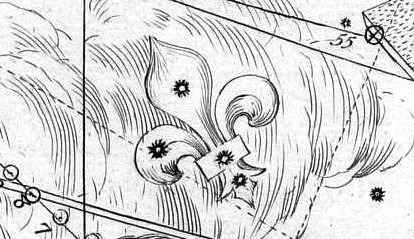
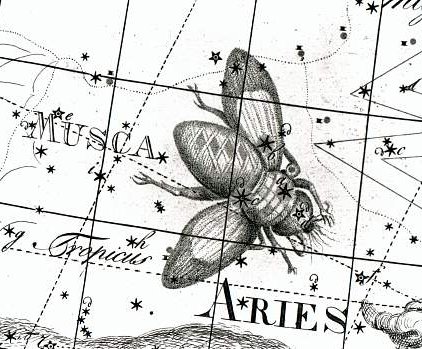 |
|
28 (118) |
(4 * 29½ + 1) |
April 30 |
May 1 (121) |
2 |
|
24 |
25 |
ºApril 26 |
27 |
28 (118) |
|
'April 1 (91) |
2 (7 * 13 + 1) |
3 |
4 (*14 = *41 - *27) |
5 |
|
"March 18 |
19 (*364) |
3-20 (*365) |
0h (*366) |
"March 22 (*1) |
|
FEBR 23 |
BIS-SEXTUM |
25 (56 = 120 - 64) |
26 (*343 = *366 - 23) |
2-27 |
|
34 - 35 |
36 = 56 - 20 |
37 = 41 - 4 |
38 = 58 - 20 |
|
399 - 400 |
401 (= 36 + 365) |
402 (= 220 + 182) |
403 = 407 - 4 |
|
The sequence of heliacal
star dates in the text
seems here to make a
jump ahead with 1 place,
because *366 = 365 + 1
and from Arcturus, Syrma
(*215) to Zuben Elgenubi
(*224) there were not 9
but 8 glyphs. Likewise
were there 9
precessional days from
*32 to *41 (Bharani).
The sky dome was moving
said Metoro where the
Full Moon reached Mira.
Maeva.
T. 1.
Move. Rangi-maeva
= Moving Sky (name of a
marae). 2. Greet,
greeting. Henry. |
|
...
The leap
day was introduced as
part of the Julian
reform. The day
following the Terminalia
(February 23) was
doubled, forming the 'bis
sextum - literally
'double sixth', since
February 24 was 'the
sixth day before the
Kalends of March' using
Roman inclusive counting
(March 1 was the 'first
day'). Although
exceptions exist, the
first day of the bis
sextum (February 24)
was usually regarded as
the intercalated or
'bissextile' day since
the third century.
February 29 came to be
regarded as the leap day
when the Roman system of
numbering days was
replaced by sequential
numbering in the late
Middle Ages ...
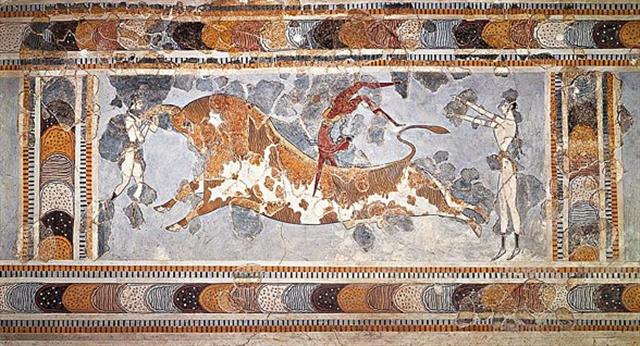 |
|

































